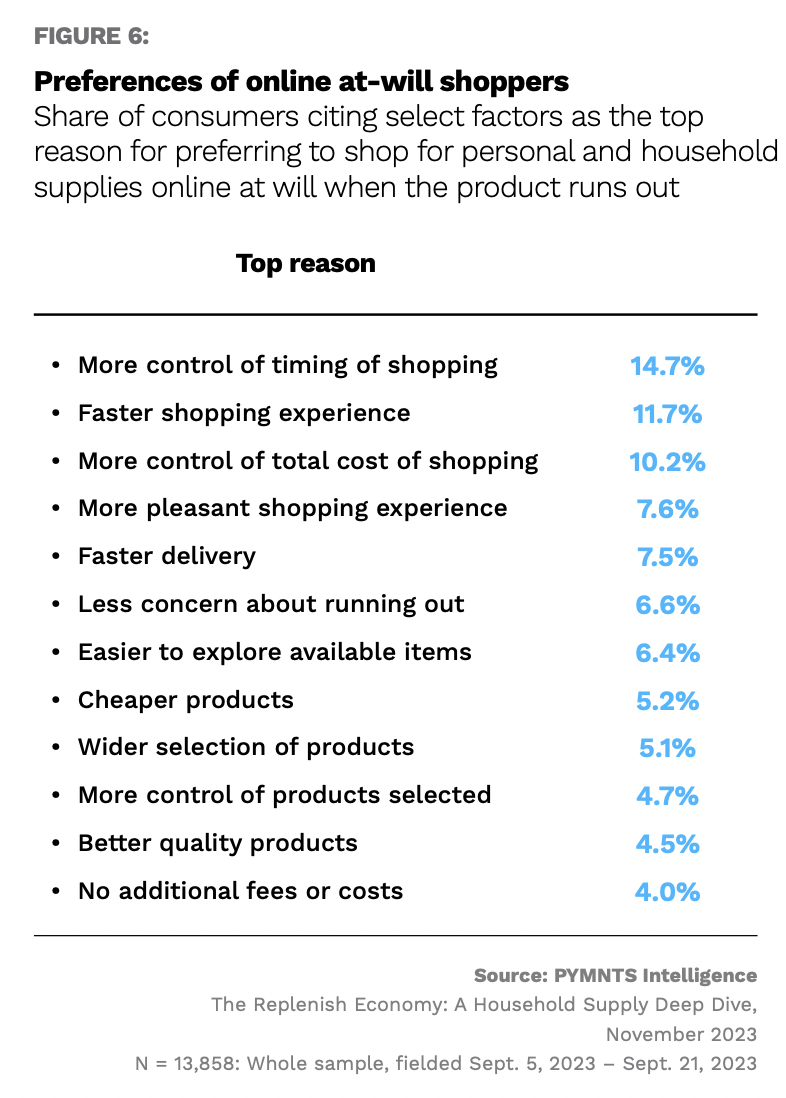
For eCommerce customers who prefer to shop at will versus scheduling auto-fill deliveries, PYMNTS Intelligence reveals, having control over how they use their time each day is a top priority.

The PYMNTS Intelligence study “The Replenish Economy: A Household Supply Deep Dive,” created in collaboration with sticky.io, drew from a survey of more than 2,000 U.S. consumers to understand their evolving shopping habits.
The study found that, among the 13% of retail subscribers who prefer at-will online shopping over shopping in stores or via auto-fill subscription, a plurality — 15% — cited control over timing as the top reason for this preference.
The second-most popular reason is that they want a faster shopping experience, with 12% of online at-will shoppers citing this as their number one motivator.
Indeed, with the rise of connected devices prompting consumers to spend more of their days multitasking, having control over their own schedules can be all the more pressing for consumers. In “How Connected Devices Enable Multitasking Among Digital-First Consumers,” the August edition of the PYMNTS Intelligence “How We Will Pay” series, which drew from a census-balanced survey of more than 4,600 U.S. consumers, found that people are multitasking for 26% of their day.
In fact, they even do so in their free time, with 76% of consumers reporting that they multitasked while engaging in leisure activities.
“The appetite for accessing these connected experiences that few consumers thought even possible five years ago is only increasing as apps get better, smartphone cameras improve and innovators create new ways to embed new experiences into an expanding variety of apps and connected devices that save consumers time and money,” PYMNTS’ Karen Webster observed in a feature last year.
As consumers increasingly embrace the convenience of at-will online shopping, it’s evident that control over time management plays a pivotal role in shaping their preferences. With the proliferation of connected devices enabling multitasking and the constant evolution of digital experiences, the demand for flexible and efficient shopping methods will likely continue to rise.